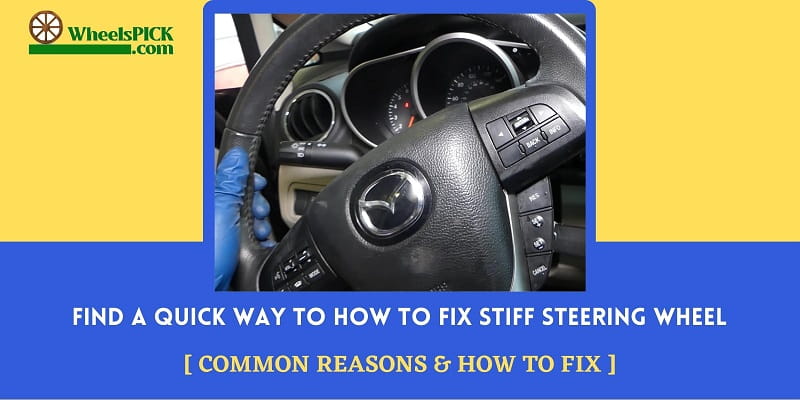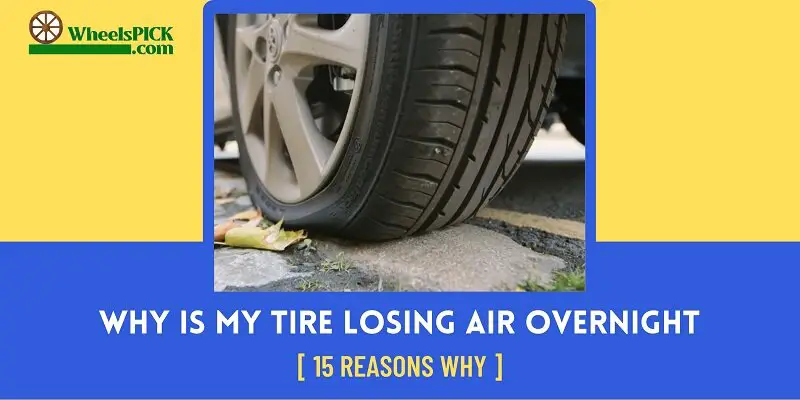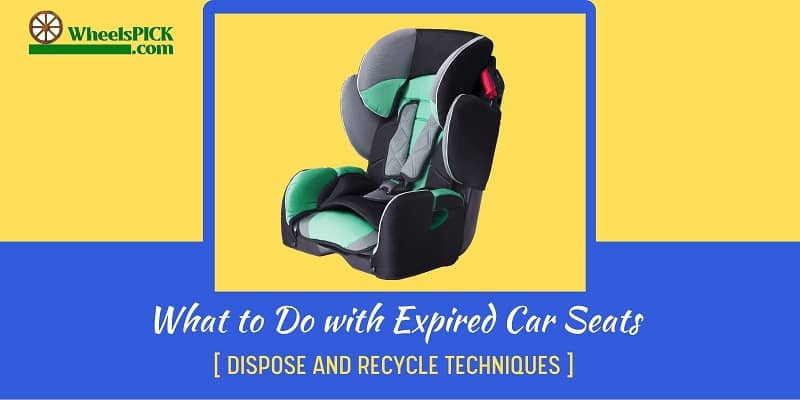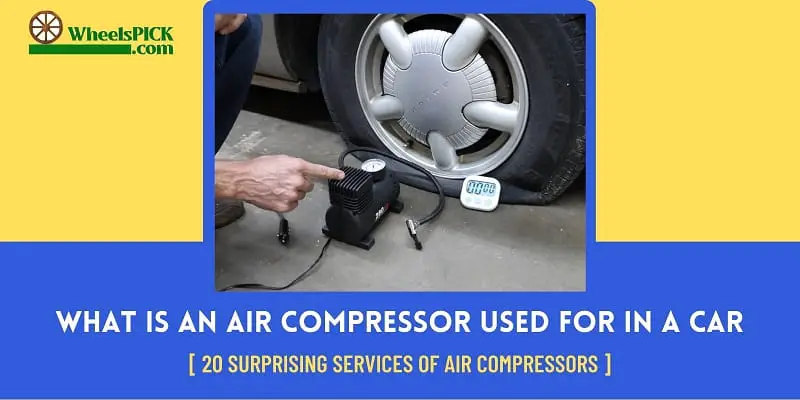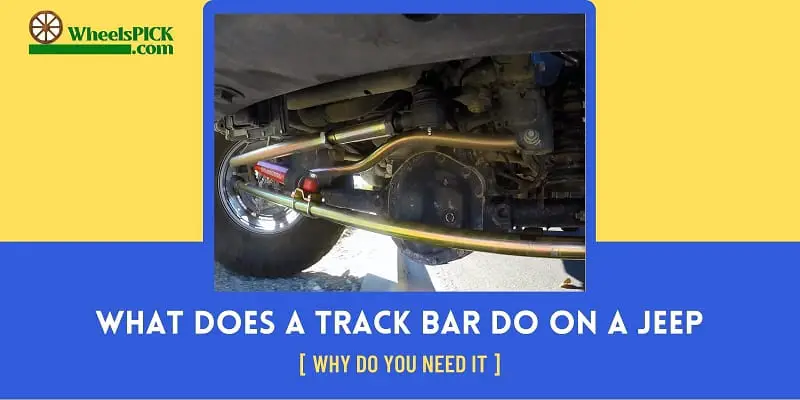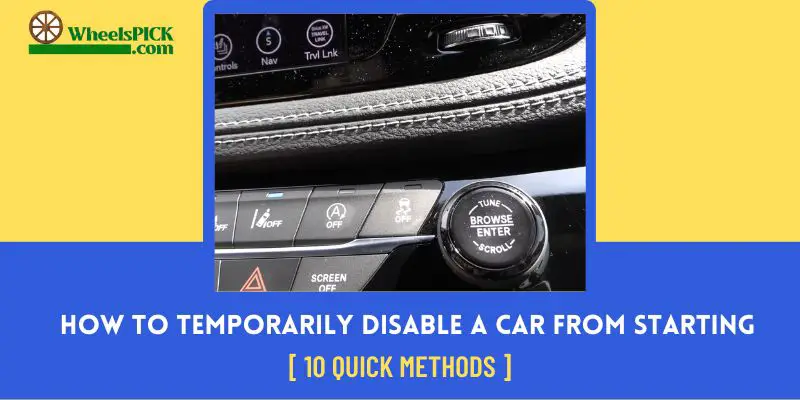It’s impossible to think about driving with a malfunctioning steering wheel. Not only will a stiff or stubborn steering wheel make twists and turns a hassle, but it will also increase potential driving risks by a mile. It’s a no-brainer that even a minor issue in the steering wheel can cause extreme chaos and danger to the riders. So, how to fix stiff steering wheel and avoid all mishaps? Stay tuned to learn.
If you’re an expert, you might get hints from the early signs, if there are any. However, the issue of a stiff steering wheel might even arise out of nowhere. Thus, even if you haven’t faced such frustrating problems yet, it’s best to know the cause and have an action plan. Without further ado, let’s get the ball rolling.
How Do You Fix A Hard, Stiff Steering Wheel?
One of the main reasons your vehicle faces a stiff steering wheel is the lack of power steering fluid in the mechanism. However, there may be many other common and rare causes of this issue. So, how to fix stiff steering wheels? You can try a few methods; however, step one is inspecting and finding the exact root cause.
Understanding The Power Steering System
Before we try to understand how or why the tension in your steering wheel occurred, we must realize its mechanics. The power steering system is critical for your car, and we’re about to dive in deeper to know why.
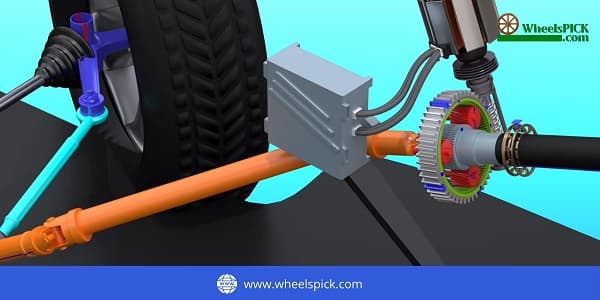
Why Power Steering Is Necessary
Essentially, power steering promotes effortless steering, which is a blessing in most four-wheelers. It does so in the following ways;
- Returning Capacity – After you take a turn, the steering wheel will automatically revert to its original state, straightening the wheels in motion.
- Bump Steering – While driving over a bump, the vehicle slightly goes on a free-will operation, which dispatches the driver from owning sole authority. Power steering provides optimized control in these scenarios for a smoother driving experience.
- Effortless Steering – Sometimes, models give drivers a hard time rotating the vehicle. This can cause immense fatigue for the drivers, significantly during more prolonged road cruising. Power steering minimizes that effort exertion that otherwise, the front wheels demand.
- Quicker Response Time – With the increasing number of cars, the chances of accidents have never been on a spike. Therefore, to prevent the cases of such mishaps, quicker turns and response time is pursuable through proper power steering systems.
What Makes a Car’s Steering Wheel Hard and Stiff?
Generally, the imbalance in the power steering fluid makes a car’s steering wheel stiff or difficult to maneuver. When there’s low power steering fluid in the car’s system, it will make turning, maneuvering, and rotating the steering wheel quite tricky and inaccurate. An imbalance in the steering fluid might arise from leaks in the hose arena. Or, it might also occur when there’s a crack in the hose’s pressurized area.
Why Is My Steering Wheel Hard To Turn?
The most standard reason for a stiff steering wheel if because of the lower steering fluid levels in the system. This can occur due to the thickening of the fluid or when there’s a leak in the hose. However, there are many more reasons and solutions to such a phenomenon, elaborated below.
Steering Wheel Hard To Turn: Common Reasons & How to Fix Stiff Steering Wheel
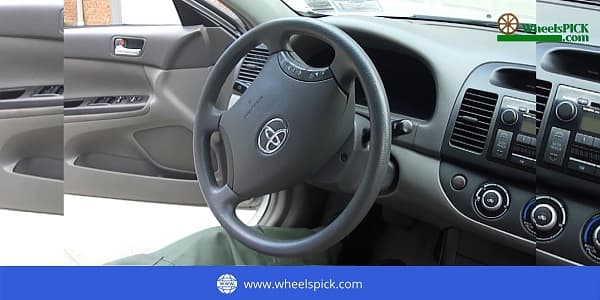
There’s nothing worst than a stiff steering wheel that won’t turn. But, it’s not just that; this issue can be hazardous too. So, to know why your car may be acting up, take a look at some common reasons below.
- Erroneous Steering Rack
The pinion and rack are vital to your vehicle’s entire system and mechanics. However, over time with extensive usage, the rack or pinion might endure damage in the U-joints or shafts, which can cause a stiff steering wheel.
- Power Steering Pump Failure
Power steering pumps may allow cars to run more than a thousand miles; however, they might fail to do so under any premature damage cases. This faulty system will slowly progress and show symptoms like noisy or hard steering, especially during turns.
- Power Steering Belt
When the serpentine belt becomes damaged or loose, it will cause issues in the power steering system, thus making it inactive. During the rise of this problem, other attachable components will also stop functioning and cause tricky turns for the car.
- Power Steering Fluid
The most typical reason for hard turns is when the vehicle runs low on power steering fluids. This problem could arise when there’s a leak in the system, especially in the hose’s pressure arena, which could be loose or cracked.
- Tire Pressure
If the tire pressures are inadequately filled or deflated, it can trigger steering wheel issues. Moreover, proper alignment of the tires is also necessary for maintaining the well-being of the entire steering column.
Now that we know the causes, it’s time to see how we can rectify the issues. So, let’s get into it.
- Tire Pressure
Users must always keep the tire pressures as per the PSI requirement. Moreover, the tire alignment must always be even to stop stiff steering wheel triggers.
- Serpentine Belt
Damage in the serpentine belt doesn’t have any other alternative other than replacement. This should cost around $110 to $130, excluding the professional labor charge.
- Steering Rack
Steering rack issues generally occur when it gradually warms up with a running engine. And when this happens, users will need replacements costing around $350 to $830.
- Power Steering Pump
Unfortunately, you can’t fix a power steering pump on your own, and the safest method is to opt for a replacement. However, sometimes the problem is with the pump’s damaged or loose connectors, for which a professional could help you without replacing any component. If that’s not the case, a pump’s replacement will need a splurge of around $100 to $200.
- Power Steering Fluid
Thickened steering fluid will require extreme force by the driver. The solution is to take out the old thickened fluid and pour in a fresh fluid according to the prescribed level. On the other hand, if there’s a fluid leak due to a cracked hose, it will need a permanent solution that can be offered by professionals.
How Much Does It Cost To Fix A Steering Wheel That’s Stiff?
The cost of fixing a steering wheel depends on a range of factors such as the damaged component, its function and vitality, the car’s model and make, and of course, the professional help or garage you’re taking it to. However, on average, fixing a steering wheel issue could cost you somewhere around $250 to $350.
How Does My Power Steering System Work?
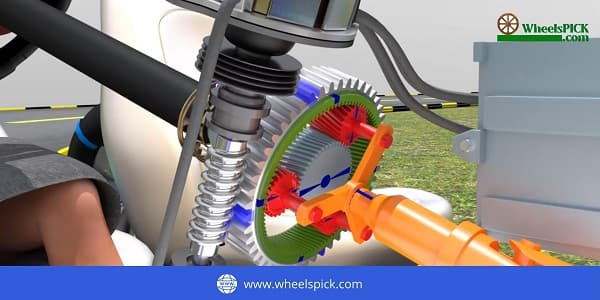
There are mainly three methods that a power steering can work on. The methods vary due to differing force multiplier devices. Let’s have a quick look at all the ways and how they work to get a more substantial insight into how to fix stiff steering wheels.
Electrical Power Steering Method

- This is the most recent method and type of power steering. It functions with a force multiplier of an electric motor in place of hydraulic fluids. The system is elaborated below when a car is in motion.
- When the car receives any such input from the steering wheels, the engaged electronic sensors read them and send them to the electrical control panel of the car.
- ECU then analyses the inputs and sends a voltage signal to electrical motors located at the rear of the steering columns.
- As the ECU sends the signals, the car starts upon the input and promotes the required torque.
- The pinion gear embraces a continuous mesh, and as the motor revs, it starts to transmit the torque multiplication, which in return exerts torque to the attached rack.
- As the torque is applied to the rack through the pinion, the rack will start to move, which will turn the front and steering wheels of the car.
Hydraulic Power Steering System
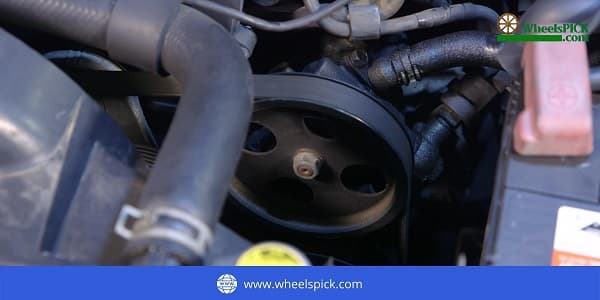
This method involves multiplying the hydraulic force by the input force of the steering to smooth out the front wheel’s operation.
The hydraulic force utilized here induces a chain of components. The elaboration is as follows;
- When a driver rotates the steering wheel, it’s an input. In this case, the engine is driven via the hydraulic pumps, and high compression hydraulic fluids run through the lines.
- This high hydraulic pressure enters the cylinder, which applies pressure on the piston of the cylinder.
- When the piston works under high pressure, it starts to move from one part to the other, pushing the fluids further along the lines. This movement gets multiplied a few more times.
- The fluid and cylinder’s pressure engages with the pinion via a coupling mechanism and provides a high force on the rack, thus, promoting the required steering action.
Semi Or Hybrid Hydraulic Power Steering Method
In this last method, the power steering mechanism’s operation is via an electric pump conducted by the engine. This approach is best for its reliability and only comes with this specific modification. The rest of the system is quite similar to the hydraulic power steering system discussed above.
Steering Wheel Hard to Turn at Low Speeds
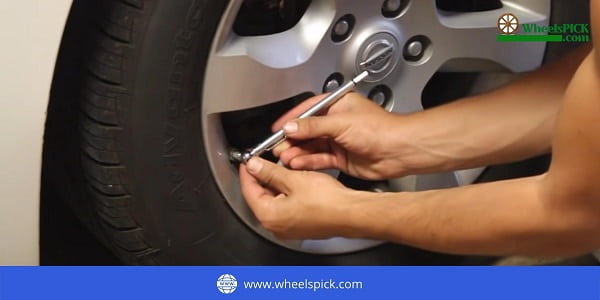
Steering wheel issues may sink in as deep as into the steering columns. Who would’ve thought, right? But the issues become far more visible when drivers operate at a lower speed. This glitch can be mainly within the serpentine belt, pump, or fluid. So, let’s quickly see what we can do about that.
- Check the air pressure on your vehicle’s tires and review if they’re as per the PSI recommendation.
- Inspect the fluid levels and power steering condition. If the fluid level is insufficient or the color has gone darker, you’ll need to replace it.
- Review if the power steering’s pulley is operating under proper tension. The steering wheel mightn’t adapt to commands immediately when the tension exceeds an inch to 3 quarters.
- Check the power steering unit to see for evident leaks in the hose’s pressure. Leaks could cause hard turns at low speed.
- Users must examine the ball joints and tie rods of the front-end parts to see if there’s any wear and tear. If there’s high wear and tear, it can turn out quite dangerous during turns as the alignment gets distorted.
What to Do When Car Overheating and Steering Wheel Hard to Turn?
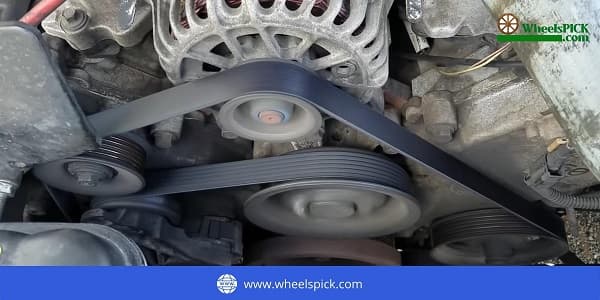
Generally, one of the significant signs of distortion within the system can be caused by overheating. But what’s worst is that this overheating, coupled with a stiff or loose steering wheel, can cause even more chaos. These two are also signs of a knocked-off serpentine belt.
Serpentine belts can be broken due to general wear and tear, snapping, frays, debris accumulation, gravel, and snow, which causes the belt to slip and the overall system to act up via overheating. If the issue is with a slipped-off belt, drivers can fix it with a simple rethreading on the pulley system. However, if the serpentine belt is broken, it will require a replacement.
When Is the Right Time to Replace the Steering Rack?
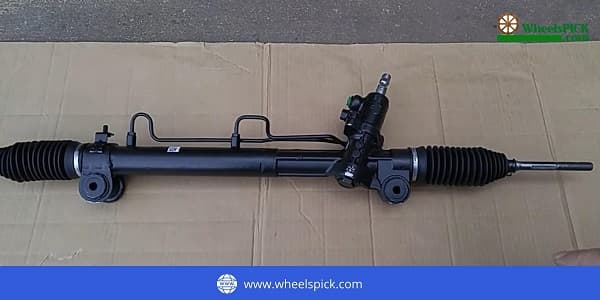
When the situation is ‘do or die,’ there’s nothing more you can do than replace the steering rack. However, there are some severe signs that you can look out for to know if the system needs a replacement. Here’s how you can tell when it’s time for a replacement.
- Noise:
When there’s damage to the steering rack, there’ll be visible noises and significant discomfort during rides, especially when the vehicle hits a pothole. You must replace the steering rack to avoid accidents and smoother drives when this happens. - Vibration:
While driving, drivers will feel a strange pulsing or vibrations through the steering wheel. Moreover, the steering rack will also feel heavy when the vehicle isn’t in motion. These are signs of a damaged steering bet or one that’s loose and needs immediate replacement. - Blunt Harmonica And Pinion:
Blunt pinions and harmonicas are the results of insufficient lubricants in the system. This condition can also arise from dust and grime buildup. Not only is this gap risky, but it calls for an immediate replacement of the steering rack.
Final Thoughts
It’s pretty remarkable how we drive daily but lack some extensive yet common knowledge, isn’t it? Since most of us don’t know how the steering wheel operates and the many components that conjointly work at the backend, we fail to understand how to fix stiff steering wheels even when minor issues arise.
However, after skimming through this informative article, you should know that a rigid or inflexible steering wheel is by no means minor and must require serious attention. All hell could break loose when your steering wheel fails to pick up and exert the driver’s command, whether before a ride or during a short road cruise.
And we don’t want that. So, now that you know how to fix every steering wheel component get to work to have safer drives!

